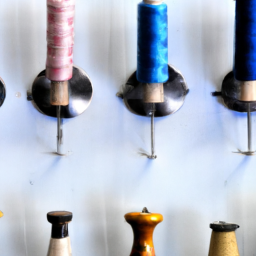
History of Sewing
Sewing, an age-old practice, is the art of joining fabrics and materials together using a needle and thread. It is believed to have originated around 20,000 years ago during the Paleolithic era. Sewing has evolved over time, playing a significant role in the development of clothing, crafts, and even technological advancements. Let’s explore the fascinating history of sewing!
The Early Beginnings
The early forms of sewing were much different from what we see today. In ancient civilizations, such as ancient Egypt, China, and Greece, sewing was primarily done by hand using animal bones or horns as needles and fibers from plants or animal sinew as threads.
During the Middle Ages, the art of sewing progressed, and techniques like embroidery and tapestry work were introduced. Sewing was primarily done by skilled individuals, and it played a significant role in the apparel worn by nobility and clergy.
The Invention of the Sewing Machine
The real breakthrough in sewing came in the late 18th century when English inventor Thomas Saint designed the first working sewing machine. However, it wasn’t until the mid-19th century that the sewing machine became practical and widely used. Elias Howe, Isaac Singer, and Allen Wilson are credited with inventing the first commercially successful sewing machines.
The introduction of sewing machines revolutionized the textile industry. It led to an increased demand for clothes, faster production, and the rise of ready-to-wear fashion. The sewing machine marked a turning point in the history of sewing, making it accessible to more people and contributing to industrialization.
Sewing in Modern Times
In the 20th century, the art of sewing shifted from being a necessity to a popular hobby. Due to mass production, sewing skills became less critical for everyday clothing, and instead, people began using sewing as a creative outlet. Patterns, tutorials, and sewing machines became more available, allowing individuals to experiment, make unique garments, and express their personal style.
Today, sewing remains a beloved craft, practiced by professional tailors and hobbyists alike. It continues to evolve, keeping up with new technologies like computerized sewing machines and 3D printing of textiles. Sewing classes, sewing communities, and online platforms have made it easier than ever to learn and master this art.
In Conclusion
The history of sewing is deeply intertwined with human civilization. From its humble beginnings as a practical skill to the industrial revolution brought by the sewing machine, this craft has played a vital role in our history and culture. While the reasons for sewing may have changed, the artistry and creativity behind it remain timeless.




